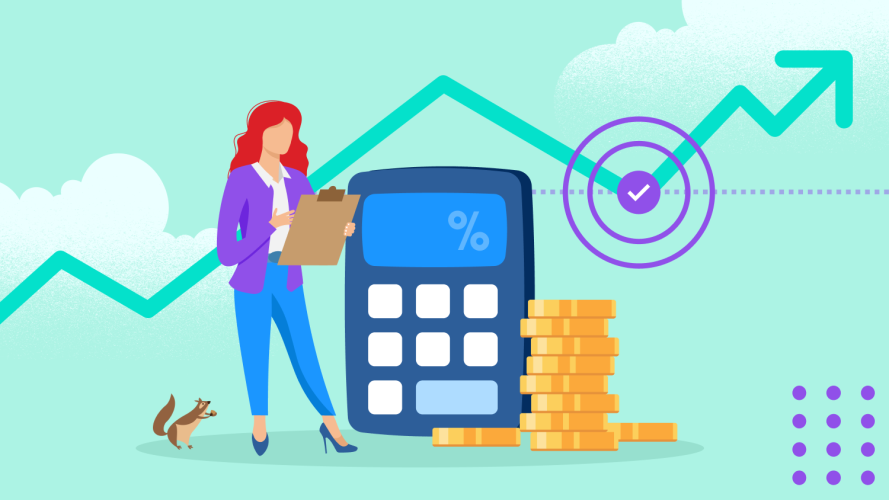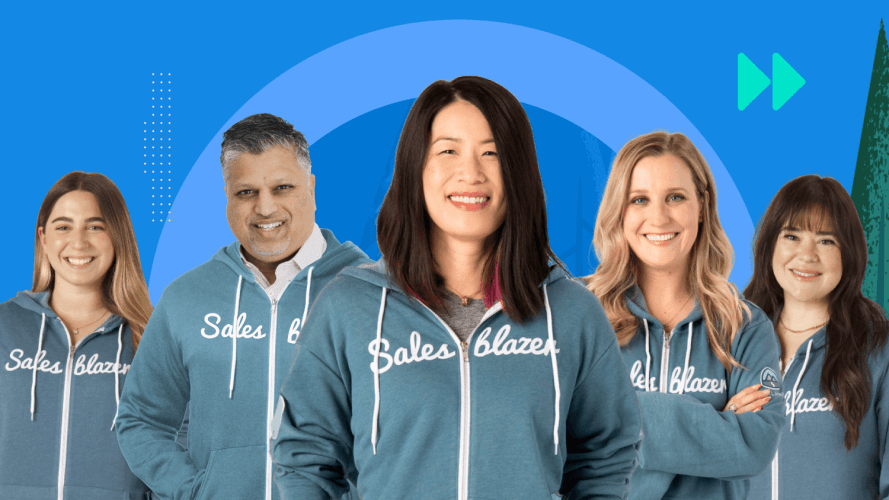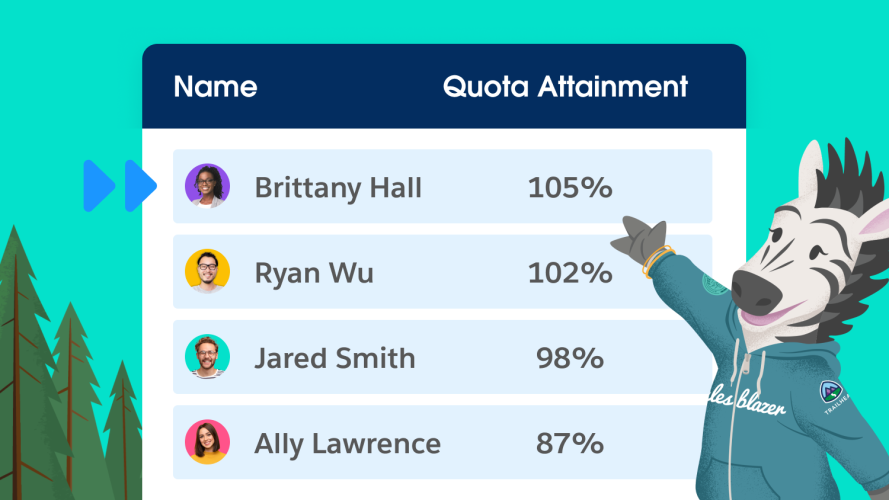What Is Inbound Sales? Strategies and Best Practices

Learn the difference between inbound and outbound sales, and what you need to know to bring prospects to you.

Lindsey Boggs
As a sales executive, I was disheartened to hear that nearly seven out of 10 sales professionals say their jobs are harder now, according to the State of Sales report. Yet nearly the same number of sales leaders admit their teams are taking fewer risks to change their situation. If your organization is facing the same challenges, consider a different approach: inbound sales.
What you’ll learn:
- What is inbound sales?
- Inbound vs. outbound sales
- Pros and cons of inbound sales
- How to conduct inbound sales
- Inbound sales best practices
Engage and close prospects from everywhere
Pull up CRM data for prospects even when you’re engaging with them outside your CRM — whether on social or online.



What is inbound sales?
Often confused with inbound marketing, inbound sales come from customers who reach out — usually because of content marketing, SEO, social media, events, or referrals. Not every inbound sales lead comes from a marketing activity, though. Some inbound sales leads may come from someone doing natural search queries, reading an article about your company, or speaking to a colleague who suggested your organization. In all of these examples, what makes them inbound leads is that the prospect is the one who reached out to your organization and not the other way around.
Inbound sales vs. outbound sales
Inbound sales are customer-driven. Prospects initiate contact through an online form or similar avenue.
Outbound sales are just what they sound like: You contact a lead, qualified or not, by cold call or email. Sometimes, you meet in person or via video.
Think of it like a Girl Scout cookie booth. When people come to a Scout booth in search of cookies, that’s inbound sales. Outbound sales are when Scouts go door to door selling snacks.
Generally, inbound sales produces higher-quality leads who are actively looking to purchase or engage with a service because they’ve prequalified themselves by coming to you. They’ve raised their hand and said they were interested in your product or service. Inbound sales leads are also better informed because they’ve already done their research.
Pros and cons of inbound sales
The main benefit of inbound sales is that you don’t have to do the legwork to find the prospect. With a lead-management platform and lead routing, they’re delivered right to you. You receive the lead and all their information — contact email, a phone number, and details about where the prospect is in the sales process. An inbound lead is warmer and has already done a lot of their own education about your product, making it easier to close a deal.
An inbound lead might also sing your praises at their own organization. If they’ve requested a demo or additional information, their interest is already piqued and they’re likely telling colleagues or friends at other companies about you. This recently happened to me. I sent an inbound lead a personalized video message, and that person took a screen shot of what I sent them. They posted it on LinkedIn, tagged me, and commented, “This is how outreach should be done.” The best part: They became one of my customers — a win all around.
Although inbound sales can produce high-quality leads, the strategy does have its drawbacks:
- Higher cost and time investment: Creating an inbound sales strategy requires understanding the customer, which means doing research and creating content around what you’ve learned. This calls for blog posts, TikTok videos, webinars, etc. Spending time creating content is expensive. Even doing research — when you calculate an hourly rate for you or your employees — costs money. And whether you do it in-house or outsource these efforts, there’s a budget and time commitment involved.
- The possibility of poor leads: There’s a reason people use burner email accounts — to sign up for things without giving up their business email address. This means those shiny new inbound leads may be useless. But there’s no way to tell until you’ve contacted — or tried to contact — them. If someone is an actual lead, you will have to track down their work email address and contact them that way.
- The constant need for new content: People find content through search engines, including assets designed for inbound sales campaigns. To land high organic search rankings, you’ll need a steady stream of new and relevant content, which can be labor-intensive to create.
How to conduct inbound sales
The steps of inbound sales mirror those of a standard sales process. There are three key ones: attracting leads, nurturing leads, and closing.
1. Attract leads through content
Content marketing is a great way to attract leads. Every piece of content you make helps build a lead’s interest in your product. Start by identifying the types of content that fit your audience, company, and product, then create a content journey taking the buyer from top of the funnel (typically “what is X?” content) to the bottom of the funnel (“What are the specifics of this product and how much will it cost me?”).
Here are common content types that fit in this journey:
- Website content like product overview pages, case studies, and company datasheets.
- Blogs that provide thought leadership and industry information.
- Social media, including videos and posts across platforms.
- Webinars — either product- or industry-specific — that provide thought leadership and a way for prospects to interact directly with your executives.
- White papers that provide detailed information information that help people make decisions about your company, product, or service.
- Sponsored content, such as news or feature stories, that are published next to traditional journalism. Most major publications offer sponsored content placement on their sites, typically with writing included in the fee.
- Digital ads that deliver targeted messaging to specific audiences based on their online activity.
- Website demos, either recorded or live, to provide prospects with more information about how your product actually works.
Creating content may look easy. Almost everyone can use AI to write blog posts and introductory emails or hire a content mill to handle this work. However, creating content that converts is much more involved and time-consuming than many organizations think. In fact, a Content Marketing Institute study found that the biggest challenge among 57% of marketers is creating the right content for their audience.
Aligning content with the buyer’s journey is equally as challenging, according to about half of the respondents in the same study. This challenge isn’t going away anytime soon, one survey respondent predicted: “As the internet gets noisier and AI makes it incredibly easy to create listicles and content that copies each other, there will be a need for companies to stand out.”
This process starts with knowing your audience to a T: their goals, needs, and challenges. Once you have that, planning your content around the sales funnel and each stage of the buyer’s journey — awareness, consideration, and decision — is key. For example, with the help of Fortune Brand Studio, Salesforce created content that won the Content Marketing Project of the Year. Why? It was topical, interesting, and unique — and it didn’t focus on the company or its offerings. Instead, it spoke to prospects’ interests and elevated the Salesforce brand.
Keep in mind it’s often not possible to know everything about your audience in advance. I don’t know every single pain point for each of the prospects I’m nurturing because that’s not scalable. But it’s certainly doable to spend some time on their LinkedIn page, look at their company’s website, and do a quick search to see what kind of news has been written about them lately. There are also plenty of services out there that can, using AI, give you a better picture of a lead.
Join the Salesblazer movement
We’re building the largest and most successful community of sales professionals, so you can learn, connect, and grow.

2. Engage and nurture leads
Once an inbound sales lead is put into the sales platform, it’s up to you to engage that person and close the deal. This starts with personalized content that addresses any concerns or questions they may have. A timely follow-up with sales sheets, case studies, documentation, and even customer referrals emailed or delivered in person is key.
This is also a perfect time to reach out with white papers or video — live or recorded — to help the lead make a decision and educate other decision-makers within their organization. The cadence and timing of these touchpoints are important. You don’t want to overwhelm your lead, but you also want to make sure your product or service is top-of-mind. Marketing automation can help. It targets prospects across multiple platforms so they encounter your messaging wherever they are — via email, online, and on social channels.
Also, make sure you’re sending content based on the prospect’s persona. You should never send a generic pitch or explanation of what your organization does. For example, there was a company I was trying to make progress with for a while. After we connected on LinkedIn, I sent my contact an email referencing our connection. The person was a VP of customer experience, so I included material in that email that was targeted to their persona and industry. Soon after, I got a reply that said, “This is very interesting. I’d like to learn more.” This is the type of response you should get if you’re nurturing leads correctly.
3. Close deals effectively
To build trust and lasting relationships with customers, you have to provide the right information and data at the right time in the process — including the moment when it’s time to close. With AI-powered Einstein Conversation Insights, you can identify and act on key signals like pricing and urgency that help you take that final step and seal the deal. They also help you personalize your final communications so you can accelerate time-to-close.
Inbound sales best practices
Inbound sales may seem cut and dry, but there are a lot of things sales teams miss. Here are some best practices from my time selling:
- Use the right sales tools: Technology, automation, and AI can help you improve workflows, understand prospects better, and engage with your inbound leads, leaving you time to connect person to person. They also keep track of your communication and outreach so you don’t double up on an email or duplicate a piece of collateral. Always use your CRM to capture leads and their details; this helps you track and manage the prospect and any associated activities.
- Listen more, talk less: When it comes time to sit down with your prospect, remember that just by reaching out they’re telling you that they already know what they need and see the promise of your solution. It’s up to you to ask the right questions to understand the business problems they’re trying to solve. But before you do that, you have to listen to their context and needs.
- Share personalized content: Address a prospect’s needs by giving them tailored resources to make their decision easier. Pricing, testimonials, spec sheets, videos, demos, and white papers are the perfect sales collateral to have on hand, but personalize each one whenever possible. Can you add their name to an intro page on a white paper? Can you set your prospect up to speak with a current customer who faced a similar issue? How about inviting them to a webinar where they can ask your sales engineer questions live? The inbound sales lead who received my personalized video became a customer because they felt seen and heard.
- Be honest: Making a sale is just the first step in (hopefully) a long relationship, so do what you can to build trust early on. Transparency is important; avoid generalizations and overselling your offering’s features. Authenticity goes a long way.
- Be available and consistent. The worst thing you can do is ignore a prospect. If you don’t have the time or the information they need, ask someone else to step in. Better yet, respond and refer them to that person. Sales is a team sport.
Increase close rates with (smarter) inbound sales
Inbound sales make sense for everyone in your organization. By nurturing a prequalified lead, you can close deals quickly and create champions for you and your product. Understanding your customers, providing the right materials and information at the right time, and creating real relationships can deliver big benefits in the long run.
Never miss another red flag in a sales call
See how Einstein Conversation Insights assists you in sales calls — with intel into what customers are saying.


























